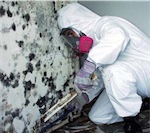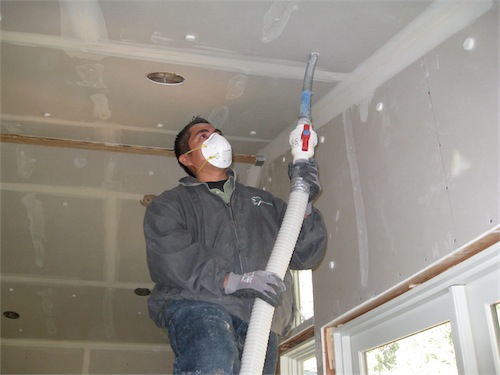I have previously written why I like wool carpets. Here are some more thoughts on common misconceptions.
MYTH: Wool carpet stains easily.
TRUTH: Because of its unique molecular structure as you can see by the picture, it has burrs that keep moisture spills and stains from soaking into the fiber. This is what the synthetic carpet industry has attempted to duplicate. Also, they have launched a campaign against wool saying it stains easily! This is a myth and very untrue. I started out selling carpet in 1976 when DuPont Stainmaster carpet was first introduced. By the time my husband and I started our natural flooring center there were 500 plus lawsuits against DuPont for people being injured by poison (stain repellent) applied to the synthetic carpet. For further investigative reporting and research you can go to Toxic Times and the archives written by Cindy Duerhing.
MYTH: I like wool, but it costs too much!
TRUTH: We encourage our clients to work it out mathematically.
Because wool lasts 25 years or more, it saves you money. Today you can buy a synthetic carpet that costs
$30 per square yard and it may last 8 years. If you are lucky and buy another piece 8 years later for $35, and 8 years later same carpet may be at $40. You would have spent over $100 plus the cost of 3 disposal trips to the dumps. Meanwhile you could have purchased for $60 per square yard a wool carpet which looks great, cleans up easily, and can withstand the wear-and-tear of a growing family
for 25 years. Plus petroleum is getting more expensive and wool is staying pretty affordable.
MYTH: I can’t use it in my basement because it might mildew.
TRUTH: Moisture trapped in dark areas normally result in mildew and mold. However, wool’s protein content and a naturally low PH combined provide
the ultimate resistance to mildew, mold and fungal attacks not just in temperate zones, but also in climatic extremes.
Susan Bahl has been a consultant for over 22 years for health compromised clients. She owns Natural Home Design in Rohert Park, CA and Keystone Green Co-operative.









Love the posts! I’ve got a few follow up questions and comments.
Resistance to mold isn’t the same as mold-proof. In most climates, in the presence of moisture and dust (under/in every carpet), microbial growth can be supported under/on any carpet. If a basement floor is fully cured and doesn’t get damp there will not be mold growth, but put any carpet on a damp concrete slab and you’ll be in for a not-so-pleasant surprise next time you lift up the corners.
I’ve heard that US wools are frequently treated with insecticides to keep moths away. Is that a myth too?
Finally, have you heard of any people with rare wool allergies having difficulty with wool carpet?
Thanks for the posts – keep up the great work!
Alex, Thanks so much for your comment and questions Yes you are absolutely right. If there is moisture in the basement wool carpet will begin to mildew. There is no flooring material that I know I of that won’t mold if there is high moisture. We at Natural Home Design always recommend to source out the causes of moisture in the home. Is it a gutter that is not installed correctly,ground water from a hill,a need to install a french drain,plumbing problems etc. But I would like to say we have found if we put a vapor barrier down in the basement,wool pad and wool carpet installed the wool will have an amazing ability to breath (take in moisture from the air and let out moisture. And under normal conditions (if there is such a thing) wool will not trap moisture, therefore mildew will be less common compared to plastic (synthetic carpet).
Insect repellent question. We have our Biohaus line that features no moth-proofing,but our other carpets have moth-proofing. It is a repellent called pyrethium.It is put into the water when the sheep are shorn. About a tsp per 100 yrds, it goes into the core of the fiber-not sprayed on and deters the baby moths from eating the wool after the moth lays her eggs.
It does not cause any off-gassing. Regular vaccuming and lavender oil will do the same thing for the un-mothproofed carpets. It is technically illegal to sell un-mothproofed carpet in the U.S., but so far the Feds have not seen it as a issue.
Allergies to wool. I wish I had a dime for every time I answered this question. Yes, there are people with wool allergies, but most that think they are,are not. Wool has a microscopic scales on the fiber that irritate some sensetive skins when wool is worn. (Those that are allergic seem to be allergic to the lanolin … some of my vendors wash most of the lanolin out of their wools.). This is why wool is such an excellent floor covering! Those same scales keep the stains and dirt on top to easily clean without using the toxic “Scoch-guard” stain-repellent. For an experiment, get a piece of wool and poor wine or water on it and watch it puddle, just long eneough to blot with dry cloth.
Hope this clarifies your questions. Thanks for your work.
Yes, Susan, you did answer my questions. You clearly know all the angles of wool carpet and I value your thorough reply. Thank you very much.